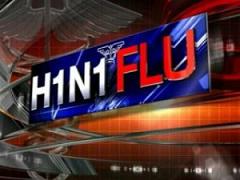WHO Continues To Deceive: Assumes That Ukraine Plague Is H1N1 Swine Flu

The World Health Organization (WHO) is continuing to deceive the world by stating sweeping assumptions about the Ukraine pandemic. Despite huge differences in transmission and deaths rates, the agency stated Tuesday that it was valid to assume that most of the cases of influenza reportedly combing through the Ukraine were caused by the pandemic A(H1N1) virus.
There is very little left to be respected of the WHO. After months of using junk science and contradictions to conceal actual swine flu cases, they are now launching phase two of their deceptive operation: Convince the world that a more lethal strain of flu is still the same H1N1 virus.
Infectious disease expert Dr. Donald Lau explained that the chances of the Ukrainian pandemic being the same H1N1 virus that has infected the world are very low. “The statistical probability of this being the same H1N1 virus are infinitesimally small.” Dr. Lau stated that the high viral transmission rates are extremely unusual for H1N1 and there is almost certainly some type of new virus, or a lethal recombination that has occurred.
Dr. Lau speculated that the Ukraine government or the WHO may be withholding and/or suppressing information for some unknown reason. “There must have been some misrepresentation of actual deaths versus infection rates.” Dr. Lau has estimated the probable fatality rate of this new virus to be close to 0.5 percent which is astronomically higher than the H1N1 virus in any part of the world.
Ukrainian authorities on Sunday launched an urgent appeal for help from world powers after it imposed drastic measures to tackle a sudden surge of flu-like illness in the country.
Almost 500,000 cases of influenza and acute respiratory illness have been reported, according to approximate but official Ukrainian figures cited by the WHO.
“Given the potential significance of this outbreak as an early warning signal, WHO commends the government of Ukraine for its transparent reporting and open sharing of samples,” the UN health agency said in a statement.
“As the pandemic virus has rapidly become the dominant influenza strain worldwide, it can be assumed that most cases of influenza in Ukraine are caused by the H1N1 virus,” the agency said.
“Judging from the symptomalogy of the reported victims, it seems highly improbable that there are less than one-hundred deaths considering the amount of infections stated,” said Lau. The dominant H1N1 influenza strain has not been capable of producing such a large amount of infections or deaths in such a short period. “The H1N1 swine flu virus is mild in comparison to the influenza strain currently attacking the Ukraine, it is not the same virus or strain as what we’ve seen,” added Lau.
The expeditious rise in infections and deaths in the past few days raise many concerns that the virus is transmitting very efficiently. Spikes in cases have been reported throughout the northern hemisphere, but the increased fatalities and the frequency in hemorrhagic cases in Ukraine have particularly raised concerns.
The highest rates of “acute respiratory illness/influenza-like illness” were found in western areas, while they were also increasing rapidly around the capital Kiev, according to the WHO. Eighty-one people have died as a result of flu and acute respiratory infections, the Ukrainian health ministry said, but the pandemic A(H1N1) virus has been confirmed in only one of the fatal cases.
The WHO said a team of specialists who arrived in the country on Monday will initially focus on the Lvov region, where reported “severe” cases of acute respiratory illness “have been especially high.”
Samples from Ukraine have also been received by the WHO’s influenza research laboratory in London for tests.
“Many questions remain to be answered,” the WHO said.
“The outbreak in Ukraine may be indicative of how the virus can behave in the northern hemisphere during the winter season, particularly in health care settings typically found in eastern Europe,” it added.

